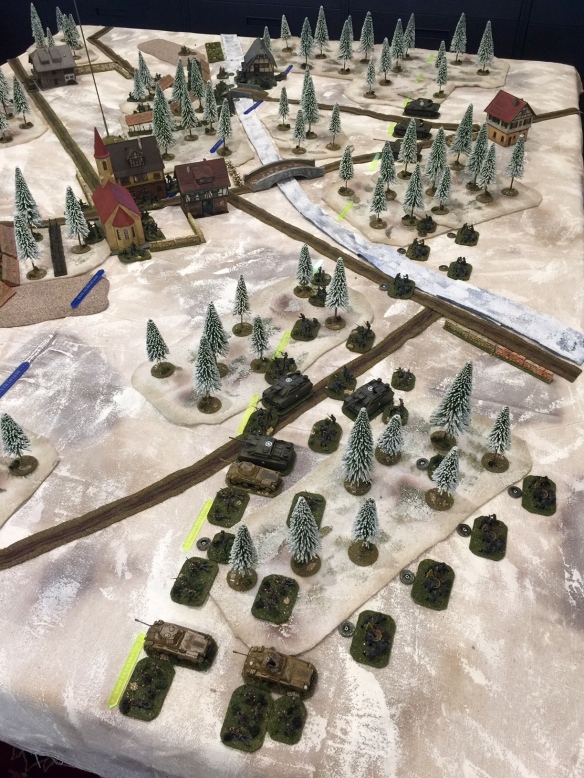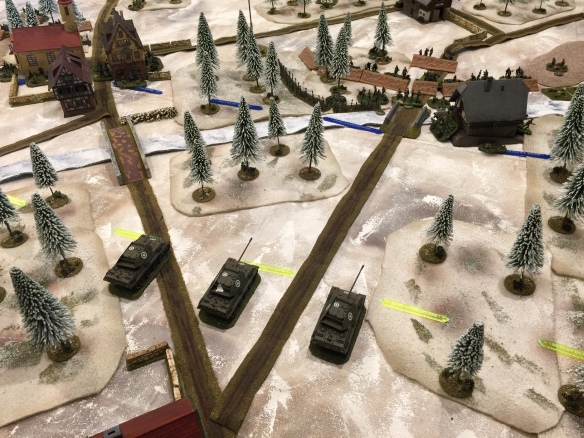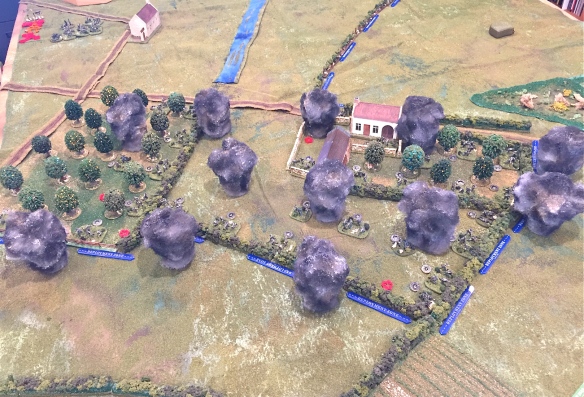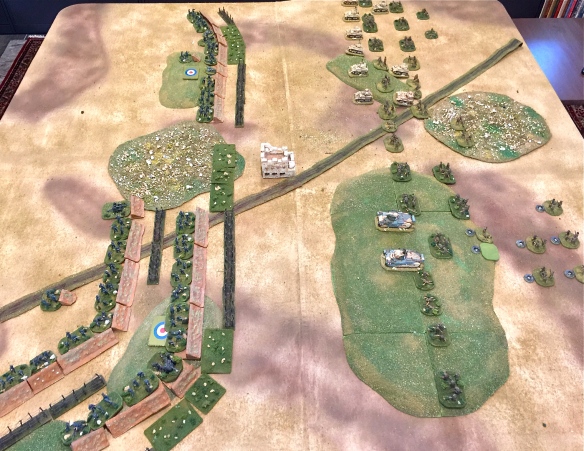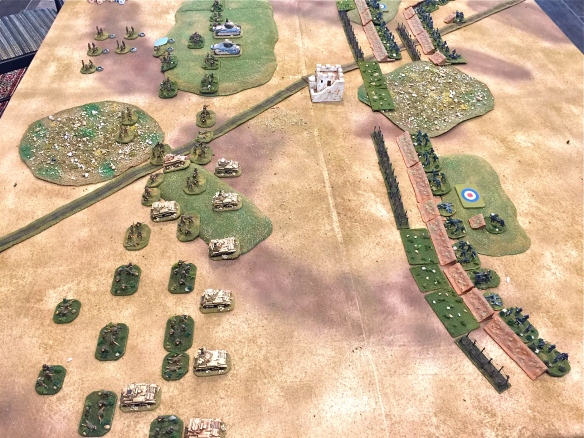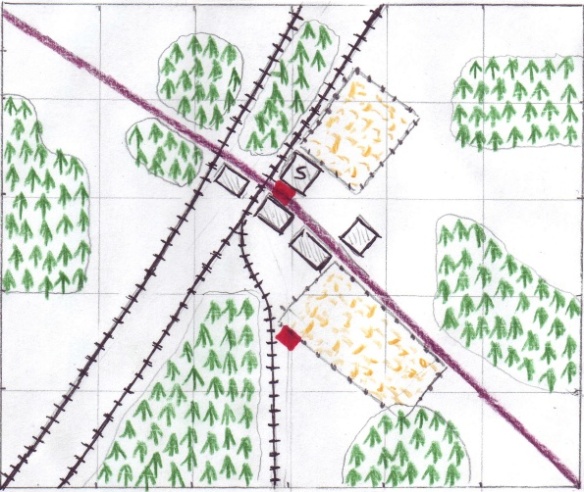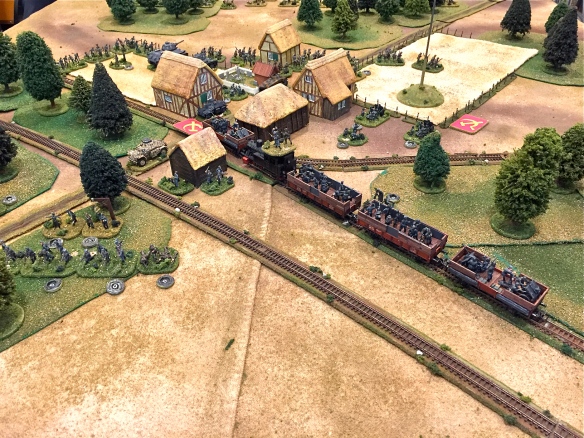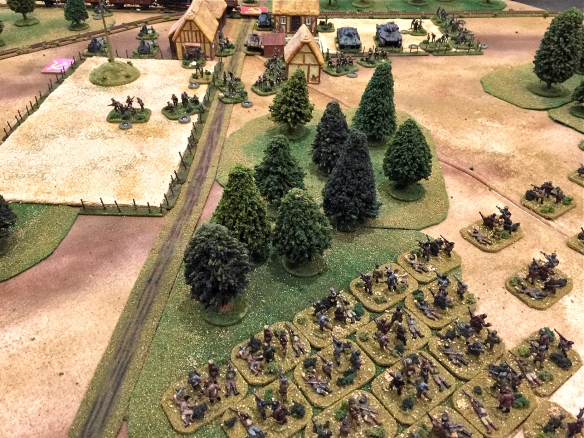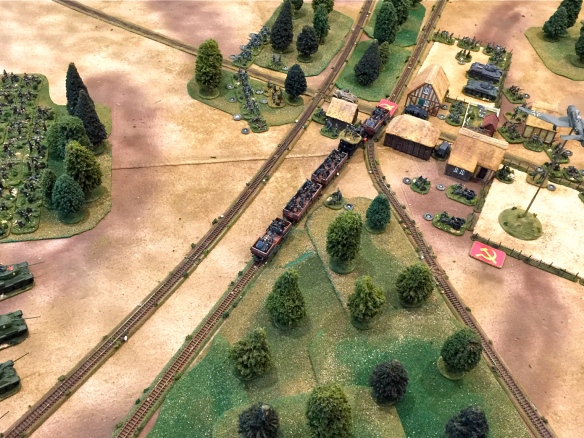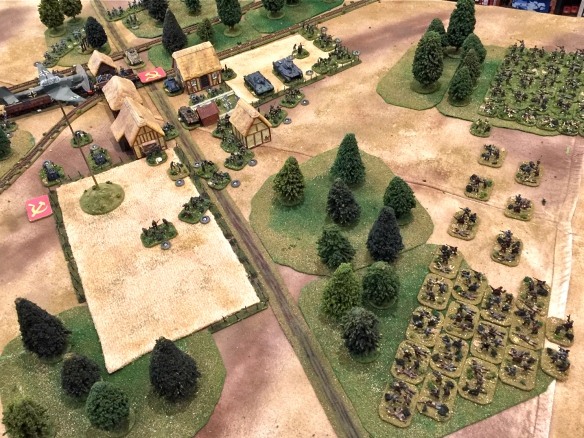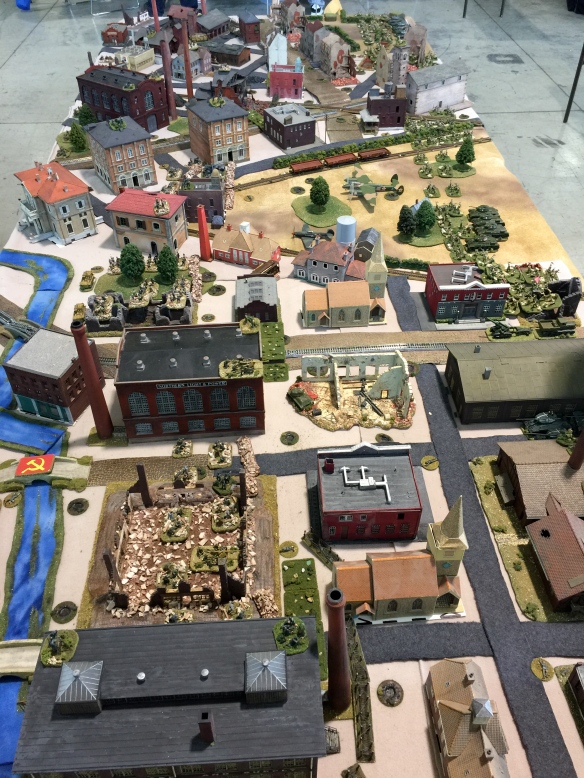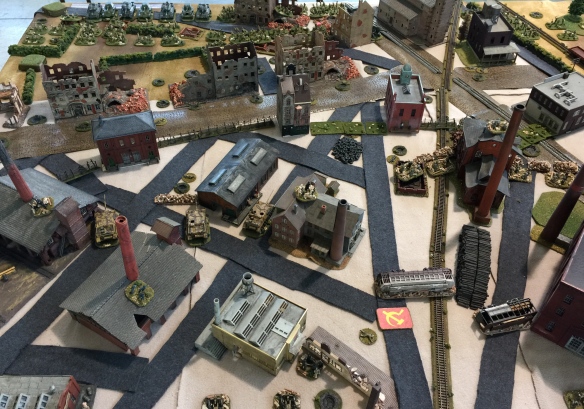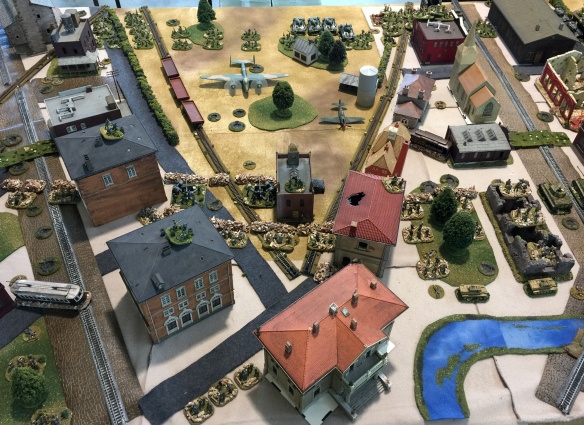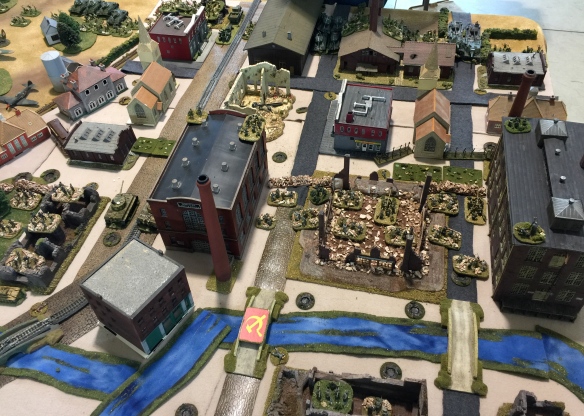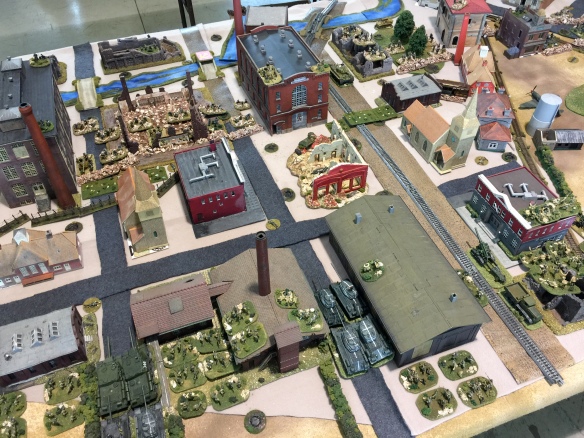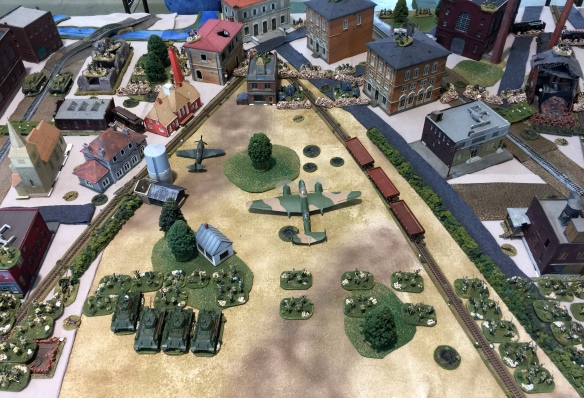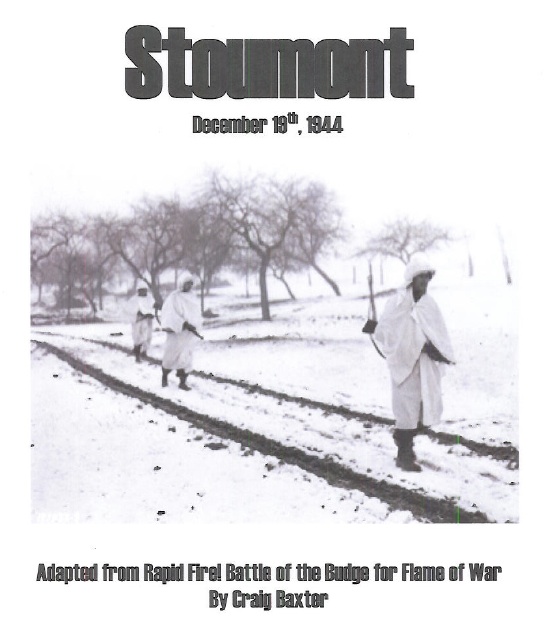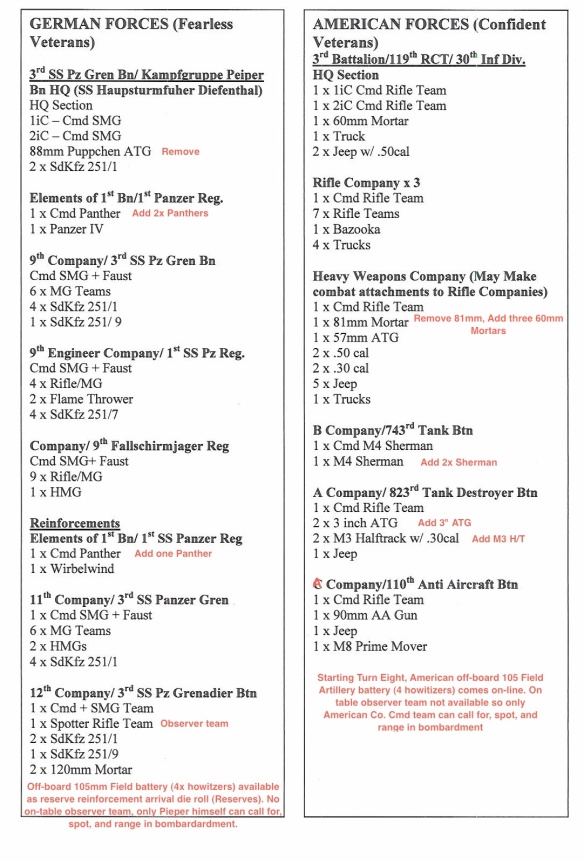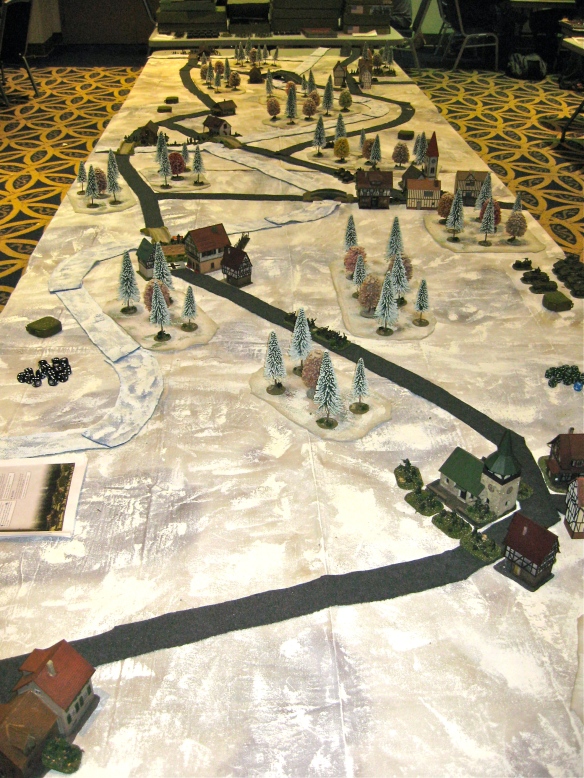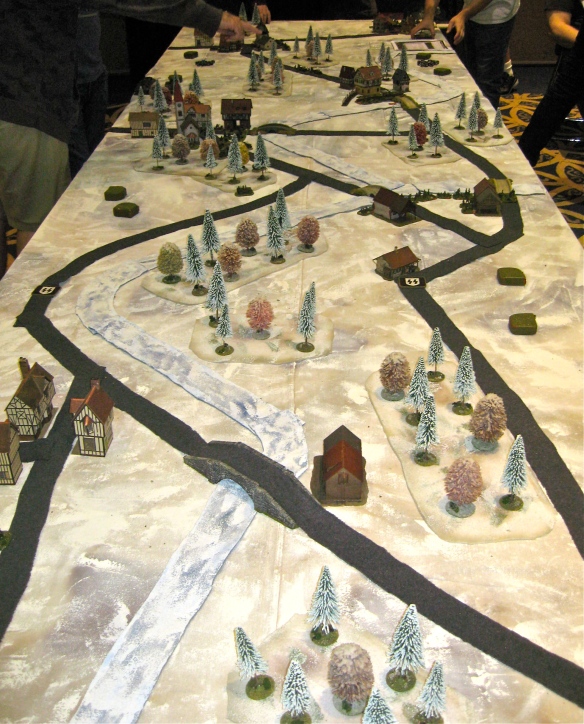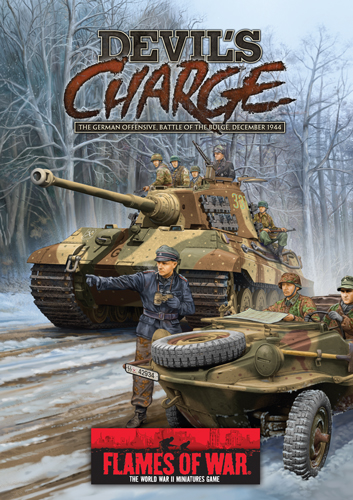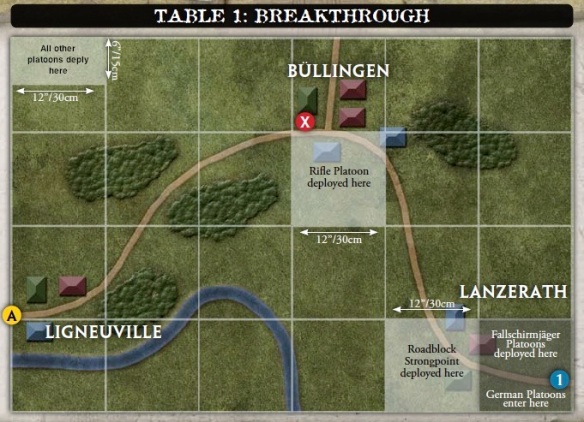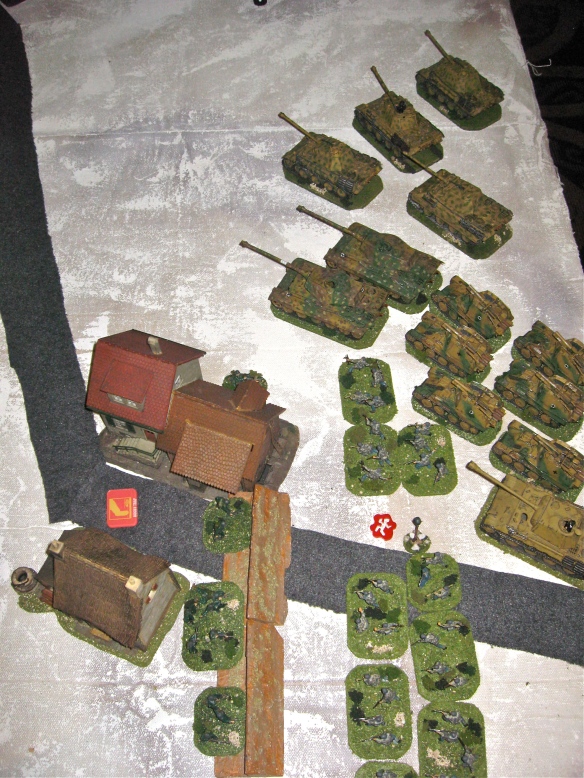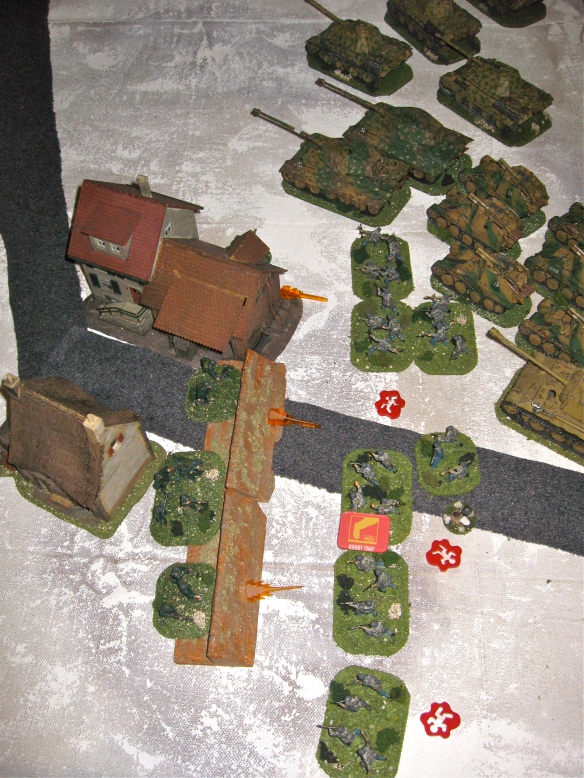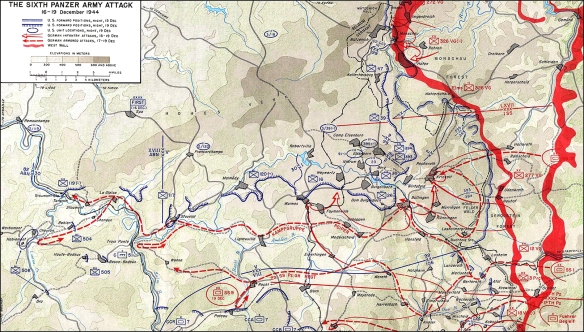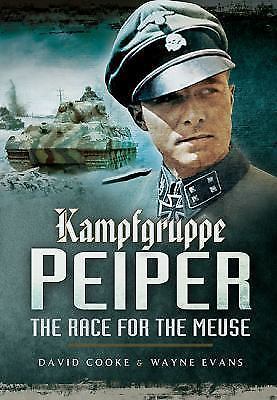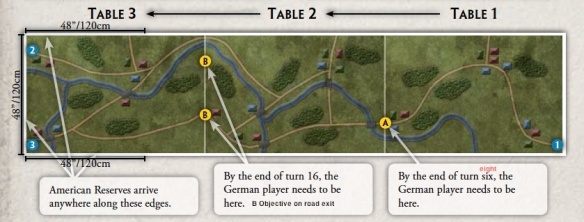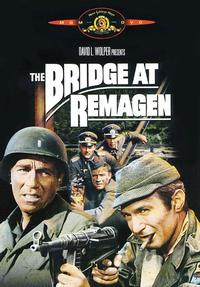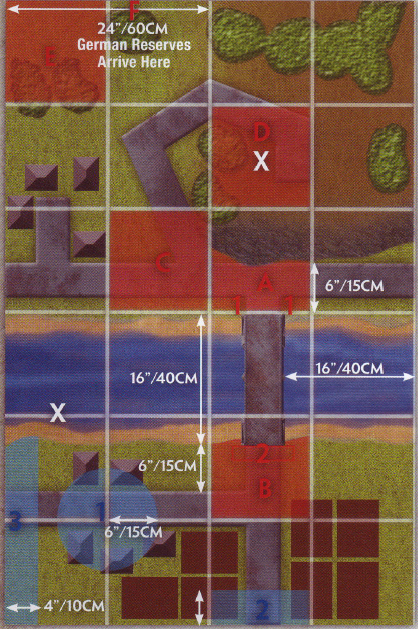This Flames of war scenario, completely designed by Daniel (son) on his own without any assistance from WR, came as a total surprise to WR. He converted an online electronic game scenario to a suitable FOW scenario, drew up the scenario map below by hand, and decided to use the Ver3.0 “Forces” book, part of the trilogy of books packaged with the MRB FOW V3.0 to create the armies of play. Therefore the platoons involved are basic in the ETO France 1944 format but nonetheless fun to game with. The scenario setting has two forces advancing (encounter like mission), meeting near two central tabletop French villages, one on a hillside, the other atop a hill mound, both villages divided by a waterway. The hillsides are covered with woods or orchard at the hill top, while in the flat land, Daniel placed grain fields, hedges, and low stone walls. Overall a great first effort. The only change WR suggested was remove the waterway, as it will divide the table into two halves. The AAR below represents the non waterway scenario. Scenario length set at ten complete turns on the 6×8′ table. Control more objective markers than your opponent for win placed using standard FOW Ver3.0 placement rules.
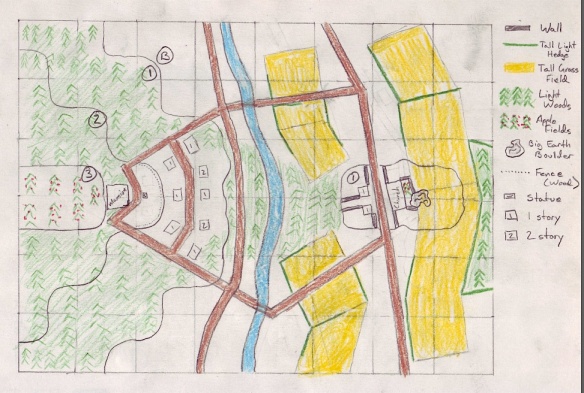
Daniel’s first hand drawn FOW scenario map. Set in French countryside, the Germans entered on top edge, the Americans the lower edge, starting up to 12″ from the table edge. Table 6’x8′ size.
Scenario forces: Both 2000 point forces taken directly from the Ver 3.0 “Forces” book. Daniel played the Germans using a Heer Gepanzerte Panzergrenadier company with supports (1990 points). WR used an American Armored Rifle company with support (1990 points).
Heer Gepanzete Panzergrenadier Co. HQ: CoCmd, 2iC SMG teams, 2x Sd Kfz 251/1 [65 pts]. Noted that no panzerfaust or panzerknackers armed teams in use. Two objective markers.
Three Gepanzerte PzGrenadier platoons: Cmd, Sd kfz 251/10, 6x MG teams, 3x Sd Kfz 251/1 each [660 pts].
Infantry Gun Platoon (highjacked from a local Grenadier company I expect): Cmd, 2x 7.5cm leIG18, Obs. team [65 pts].
PzGrenadier AA gun platoon: 2x Sd Kfz 10/5 2cm [60 pts].
Heavy tank platoon: 3x Tiger I E [645 pts]. Ouch!
Artillery battery: Cmd, Staff team, 2x Obs. teams, 4x 10.5cm leFH18 [210 pts].
Panzerspah Patrol: 3x Sd Kfz 234/2 Puma 5cm AC [150 pts].
Limited Air Support: Ju 87G Stuka [135 pts].
For the Americans, WR rostered a standard Armored Rifle company (1990 points) with the following platoons:
Armored Rifle Co. HQ: CoCmd, 2iC Carbine teams, Baz. team, Jeep, M3 H/T w/50 cal. Sherman recovery tank [45 pts]. Two objective markers.
Two Armored Rifle platoons: Cmd, 5x Rifle teams, 5x Baz. teams, 2x M1919 LMG, 2x M3 H/T w/50 cal., 3x M3 H/T w/AA MG each [450 pts].
Armored Mortar platoon: Cmd, M3 H/T w/50 cal., 3x M4 81mm mortar [60 pts].
Armored Assault gun platoon: 3x M8 Scott HMC [105 pts].
Tank platoon: 5x M4a1 Sherman [320 pts].
Tank platoon: 5x M4a1 (76mm) Sherman [470 pts].
Field Artillery: Cmd, Staff team, Obs. team, jeep. 4x M2a1 105mm [140 pts].
Field Artillery: Cmd, Staff team, Obs. team, jeep, 4x M1 155mm [210 pts].
Priority Air support: P 47 Thunderbolts [190 pts].
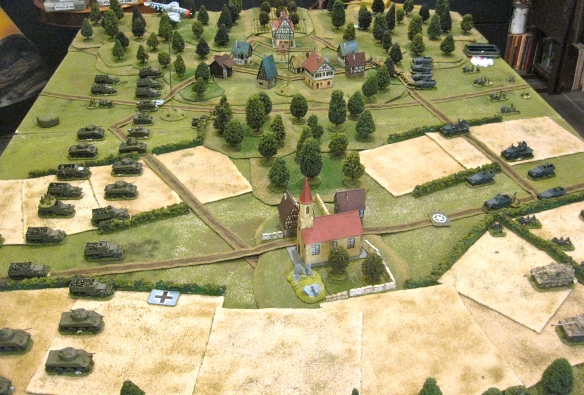
General view of the tabletop showing the raising hillside village at top and mound top village with church below. American on left, the Germans at right in starting positions.
Deployment: First WR’s deployment. From left to right WR deployed one AR platoon in halftracks facing the hillside village supported by his M8 Scott HMC assault guns. Center position the M4a1 75mm Sherman platoon, the Armored M4 81mm Mortars, then the other AR platoon, in their halftracks to their right. Lastly the M4a1 (76mm) Sherman platoon held the right before the mound village and Daniel’s Tigers. Command wise the CoCmd team went with the left AR platoon, the 2iC team with the right AR platoon. Continue reading

